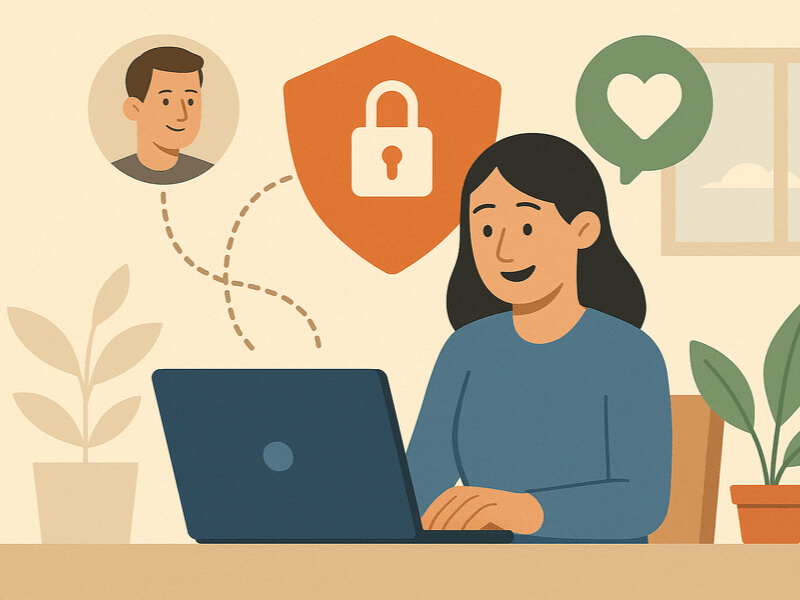
Building a Positive Remote Work Culture Without Compromising Security
Remote work is no longer a perk. It’s gone from being a rare luxury to an everyday routine that spans borders and time zones. Company leaders and CEOs need to think of new ways to keep teams engaged and proactive as screens light up with meeting notifications in kitchens, living rooms, and airport lounges. Managers want secure ways to keep traffic encrypted beyond office cubicles.
Some of them start by reading a itop vpn review, looking into how specialized software can keep their employees’ data private. But technology alone is not enough to build trust or real teamwork. The temple of remote culture stands on several key pillars that usually include easy-to-understand rules for everyone to follow, tools to help the teams make informed decisions and work effectively, and habits that make security feel natural, not heavy-handed. When security becomes part of the daily routine and blends in with the casual rhythm of daily tasks, the teams can focus on achieving their goals and task completion rather than stressing out about outcomes and risking burnout as a result.
This guide covers the essential elements that can help employers combine security and collaboration without stifling freedom or creativity. Every aspect includes practical tips, real-world examples, and small wins that can turn lifeless policies into shared pride. If you want engagement and team spirit to stay intact, follow these tips for higher morale and fewer turnovers. Let’s get into one of the most essential parts of remote work, clear expectations, the foundation of every future success.
Defining Clear Expectations and Processes
Someone who works remotely doesn’t have the luxury of leaning over a cubicle and asking if their spreadsheet can be used in the upcoming meeting. Distance dictates its own rules; guidance is required to be brief, understandable, and written in plain language. It’s highly recommended to outline the daily workflow, showing how staff can store, create, and send information without having to double-check every step. Make sure the owners are documented and the retention period and sensitivity ratings are defined.
You can also tie every rule to a specific work goal so employees can see the correlation between safe behavior and performance success. For example, choosing an encrypted channel aligns with client-trust goals that are tied to annual revenue. All guidelines and instruction manuals should be in one place (you can use a searchable handbook for information storage) and easily accessible. The handbook can be pinned to the collaboration hub, with an extra copy offline for maximum security. Review policies twice a month and check in with the team to make sure everyone is on board and understands the task. Unclear wording or friction points can be discussed to eliminate any misinterpretation. To keep awareness fresh, implement revision practices and set clear expectations. Keeping your team updated about the latest news removes the element of guesswork, prevents accidental information leakages, and frees the employer from monitoring the team nonstop.
Choose the Correct Security Tools
Not even the most organized team in the world can remain nonchalant if the protective software they use stalls file sharing or slows sign-in. To prevent this, you can start with identity checks and enable multi-factor authentication across devices. The endpoint defense has to update itself automatically to avoid information leaks, whether you are using your device at home or in a cafe. Pairing this with a remote access VPN ensures that employees' connections remain encrypted and secure, even on public networks. Make sure you only use collaboration tools with end-to-end encryption and run small pilot testing before rolling out big releases for the company. People prefer products that work out of the box, so preliminary testing makes perfect sense for encryption software.
You can also collect people’s feedback on speed, the ease of mobile use, accessibility, and design. The true cost is not limited to purchasing license fees - it also includes breach fines and recovery time. Every technology choice made within the company should be discussed in advance and addressed in a brief, clear manner. The team should be able to ask questions if needed and understand the reasoning behind every decision, however small. Highlight which problem the tech choice solves and which team requested it first to prevent dissent or pushback. The right set of tools becomes an aid instead of a hindrance and improves productivity across all time zones.
Create Clear Communication Channels
Maintaining trust in remote groups is a task of its own, especially if you are planning on building rapport within a particular group over a short time. Open communication and daily feedback ensure interactions remain effortless and not bothersome. While working remotely means no watercooler talk and hallway chatter, one of the best ways to encourage clear communication is to establish 24/7 live chats filled with praise, jokes, quick fixes, and queries. You can choose the primary hub that works well with your objectives, such as Slack or Microsoft Teams, and apply names to threads to avoid confusion. Encourage your team members to post their inquiries in public chats. This will help build a practical database with answers and establish an online archive that contains useful info that pertains to all possible scenarios and outcomes.
All major decisions, files, and recordings should be tagged for newcomers to feel at ease as they catch up with the latest news without the need to search for answers elsewhere. Weekly stand-ups where teammates share goals and insights are just as helpful - they allow the team members to get rid of psychological barriers and maintain a high level of trust within the group. Suppose you are dealing with a particularly sensitive issue that should not be made public and is best resolved without witnesses. In that case, you can create private rooms where membership will be limited and automatic retention will apply.
Leaders should establish the tone for the entire group by providing logical explanations every time they make a radical setup change. This way, team members won’t feel left out and have an opportunity to initiate a polite, respectful discussion. When the dialog remains visible and is not hidden from the rest of the team, spotting unusual requests, scam attempts, and fake approvals becomes easier. Transparency also fosters collaborative teamwork and ensures the team members pursue similar goals, regardless of cultural or scheduling differences.
Ensure Team Interaction and Bonding
Security measures are best implemented across teams that understand their accomplishments are a collaborative effort and are willing to admit that their colleagues are more than random email addresses on screen. Even though managers don’t have access to the perks of office life like socializing in the kitchen or having lunch breaks between meetings, these harmless social rituals are replaced with fifteen-minute coffee chats, where small groups actively discuss hobbies, house pets, and weekend meals.
You can combine the conversational format of these meetings with shared-playlist sessions, selfie sharing, yoga breaks, or friendly contests to keep the team engaged. We recommend rotating organizational duties to make sure every voice is heard, even when it’s playful banter. When it comes to remote engagement, cameras should remain optional (forcing someone to go public is not acceptable in a healthy workplace environment), yet playful backgrounds and on-screen props that make other teammates laugh should be praised. In addition, the managers should monitor cultural occasions and holidays so nobody feels like they have been sidelined in favor of a more pressing event. Volunteers selected from the team may share positive messages about multiculturalism and the importance of working on the same project, albeit remotely.
Maintaining Security in Social Rituals
Managers will have to supervise these remote gatherings to make sure the corporate spirit prevails. However, they must avoid dominating the event and demonstrate genuine interest in each story without sidelining other participants. Friendly interactions have a hidden security benefit: team members will be quick to notice any unusual activity going on in the chats. Odd texts will be easier to spot among the friendly back-and-forth between colleagues, which in turn protects employees from sharing sensitive information, replying to fake accounts, and saying too much to someone who might potentially use this data for personal benefit.
Management should empower and encourage anyone who reports oddities when something looks wrong, and express their gratitude in public chats so that others know it is safe to speak up and outline their views on the matter. All team members should be provided with anonymous forms so that they can deliver detailed feedback in case they are too shy to participate in public discussions and forums. Over time, these shared moments feel like actual teamwork and are no longer regarded as a professional duty that must be endured for the sake of maintaining team spirit and ensuring security across teams.
























